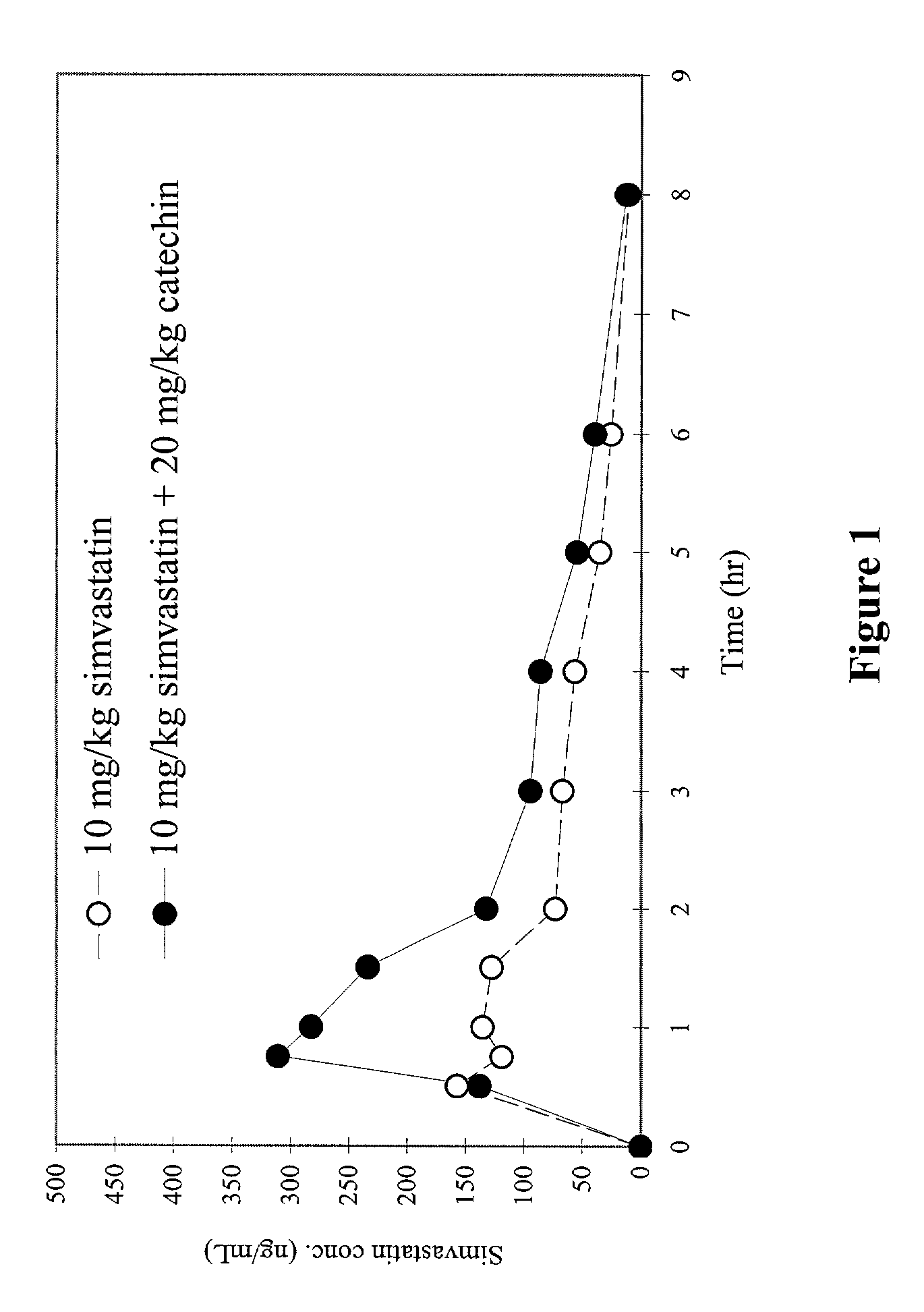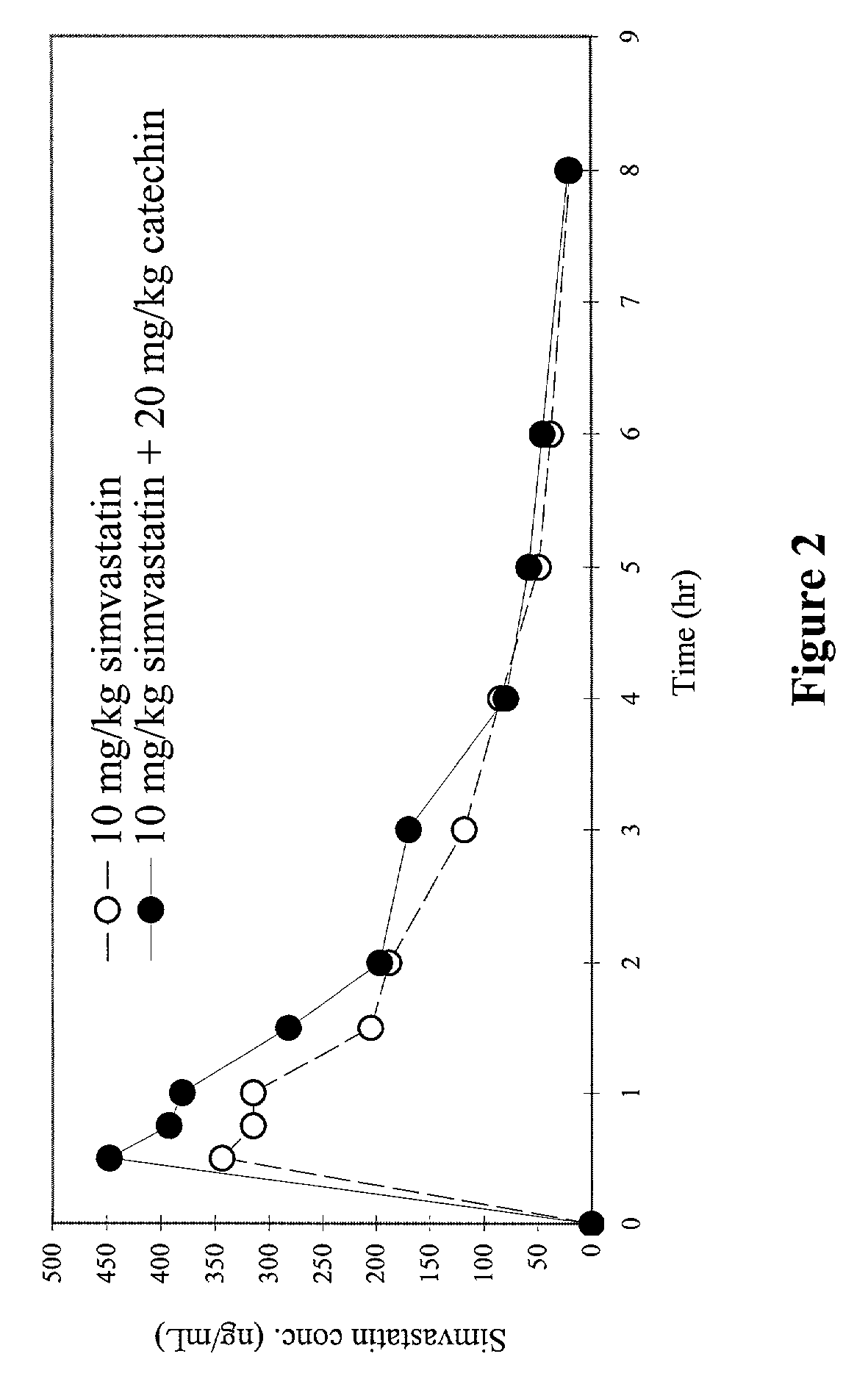Cytochrome P450 3A inhibitors and enhancers
a cytochrome p450 and enhancer technology, applied in the field of chemical compounds, can solve the problems of low bioavailability of drugs given to patients, and achieve the effects of reducing cyp3a enzymatic activity, preventing biotransformation, and improving the bioavailability of cancer drugs
- Summary
- Abstract
- Description
- Claims
- Application Information
AI Technical Summary
Benefits of technology
Problems solved by technology
Method used
Image
Examples
example 1
Preparation of Liver Homogenate
[0041]Rat liver microsomes were prepared according to the following steps:
[0042]1. A rat was sacrificed by decapitation.
[0043]2. Liver tissue was quickly excised from the sacrificed rat, and immediately moved into ice-cold 0.25 M sucrose solution for cooling; liver tissue was further washed to remove excess blood off the tissue.
[0044]3. The washed liver tissue was blotted dried and weighed.
[0045]4. More 0.25 M sucrose solution was added to the solution containing liver tissue to make up to four times of the weight of the starting solution, i.e., a 20% w / v liver homogenate.
[0046]5. The liver tissue was finely cut on ice until the homogenate contained no visible big fragments. Excess bubbles should be avoid during the cutting process.
example 2
Determination of CYP3A Activity By Erythromycin Demethylation Method
[0047]To measure the efficiency of CYP3A activity inhibitors and enhancers of the present invention, the following method was developed:
[0048]The tissue homogenate prepared according to Example 1 was mixed with 360 μl 1.15% potassium chloride (KCl) solution. Then, the following solutions were added orderly into the homogenate: 375 μl shotgun buffer, 50 μl cofactor, 40 μl 6 mM erythromycin, 50 μl 10 unit / ml G6PDH, 125 μl 90% microsome, 125 μl KHPO4, 125 μl CYP3A activity inhibitor of the present invention.
[0049]The mixture solution was shaken at 37° C. for fifteen (15) minutes. One milliliter ZnSO4, Ba(OH)2 solution was added into the mixture solution and the solution was shaken to dissolve properly. The mixture was centrifuged for ten (10) minutes at 15,000 rpm. The supernatant 1 ml was removed from the mixture, and 0.6 ml Nash's Reagent solution was added into the mixture. The mixture was stored at 60° C. for ten (...
example 3
Effect of Catechin on Plasma Concentration of Simvastatin in Beagles
Purpose:
[0056]The purpose of this study is to determine the effects of orally administered CYP3A inhibitor(s) on the bioavailability of various first-pass-effect compounds in beagles. The CYP3A inhibitor used in this study is catechin. The first-pass-effect compound tested in this study is simvastatin.
[0057]Catechin is 2R-trans-2-(3,4-dihydroxyphenyl)-3,4-dihydro-2H-1-benopyran-3,5,7-triol. Catechins, also known as flavonoids, represent a group of naturally existed compounds obtainable by extraction from plants containing them. Such plants and the catechins they contain are well known to those skilled in the art, such as Catechu gambir (Uncaria family) and green tea (Camellia sinensis). The catechins may be extracted from either a single plant or any mixture of plants containing them. Examples of the most common catechins which are obtained by extraction from these plants are, catechin, epicatechin, gallocatechin, e...
PUM
| Property | Measurement | Unit |
|---|---|---|
| Molar density | aaaaa | aaaaa |
| Molar density | aaaaa | aaaaa |
| Molar density | aaaaa | aaaaa |
Abstract
Description
Claims
Application Information
 Login to View More
Login to View More - R&D
- Intellectual Property
- Life Sciences
- Materials
- Tech Scout
- Unparalleled Data Quality
- Higher Quality Content
- 60% Fewer Hallucinations
Browse by: Latest US Patents, China's latest patents, Technical Efficacy Thesaurus, Application Domain, Technology Topic, Popular Technical Reports.
© 2025 PatSnap. All rights reserved.Legal|Privacy policy|Modern Slavery Act Transparency Statement|Sitemap|About US| Contact US: help@patsnap.com


